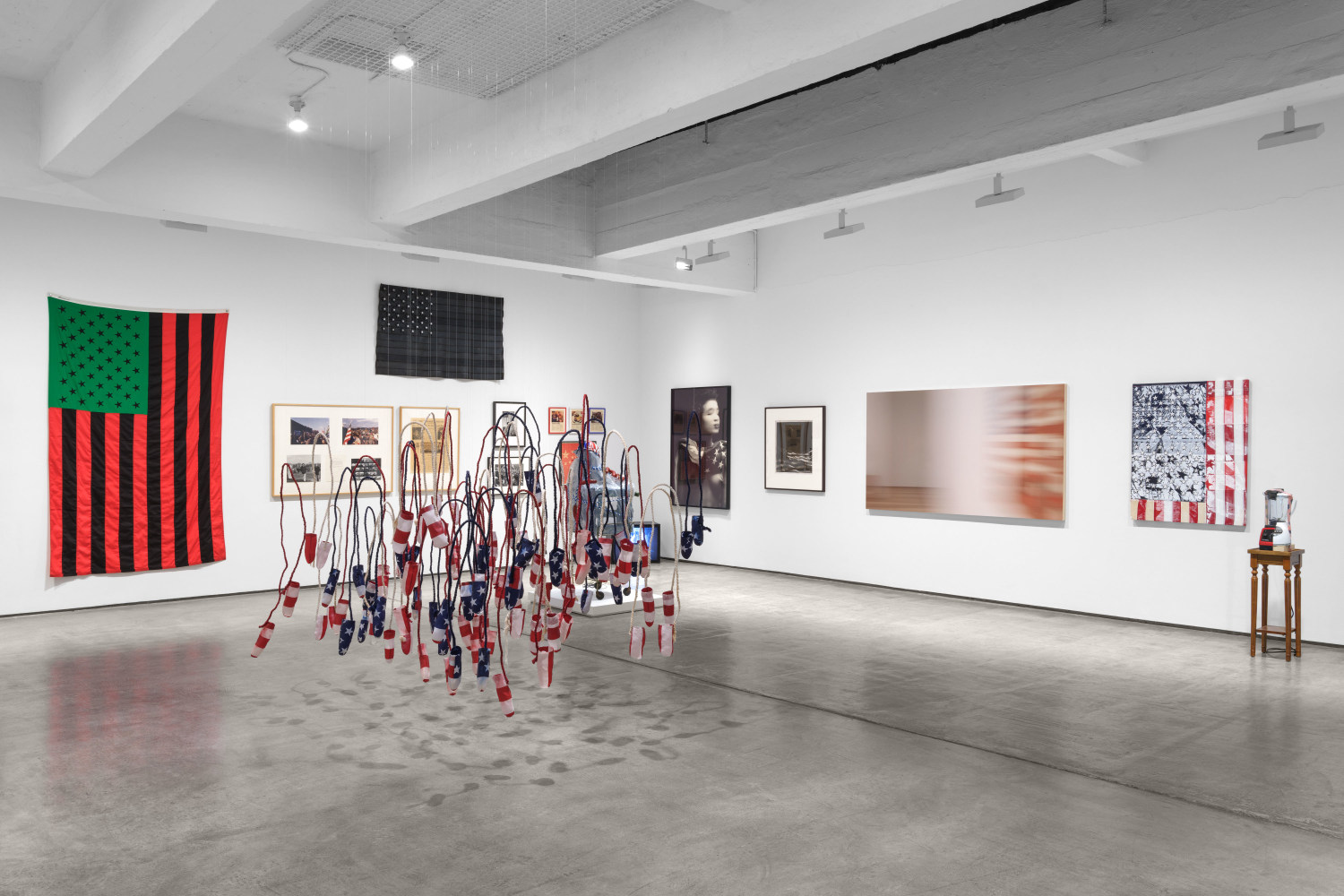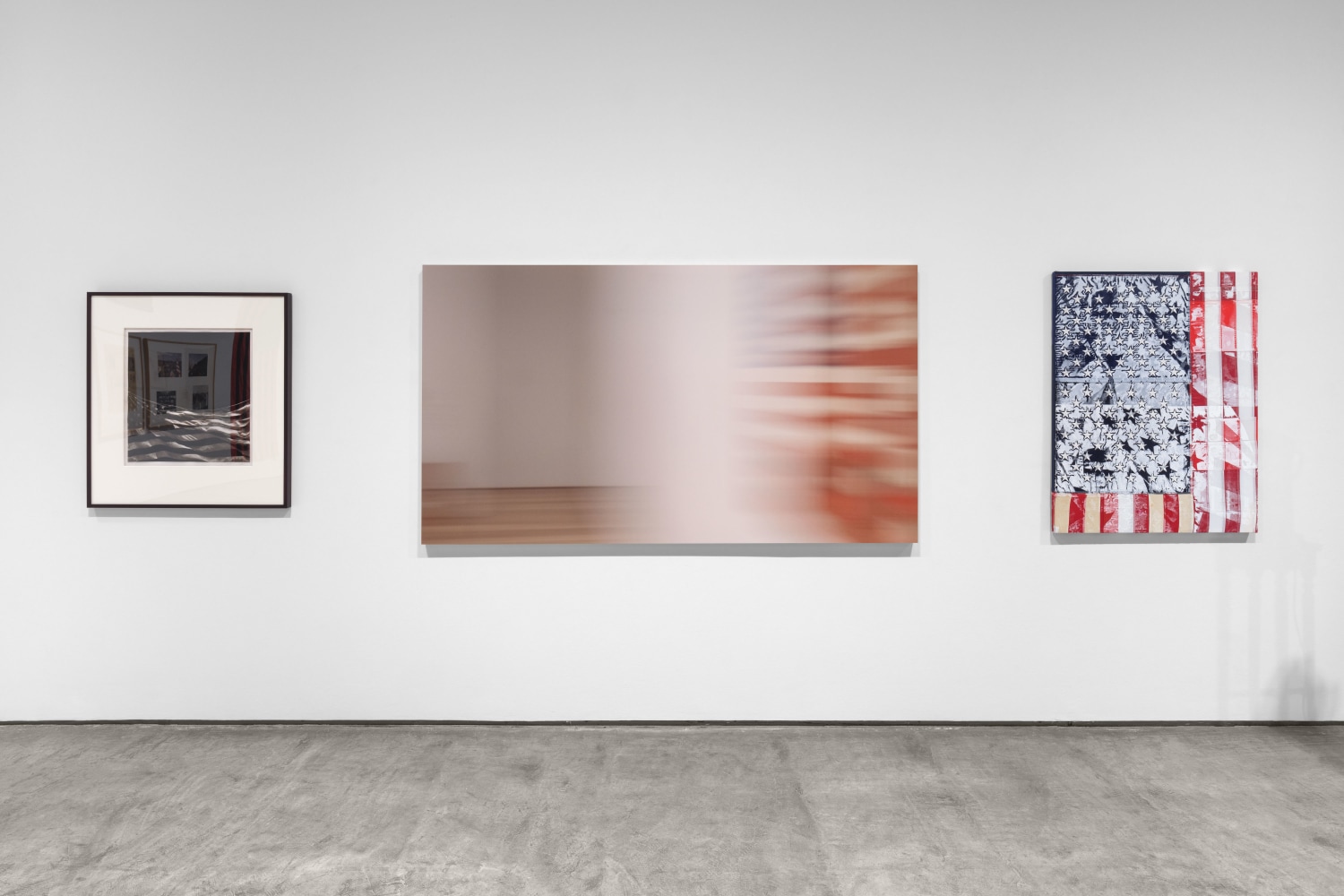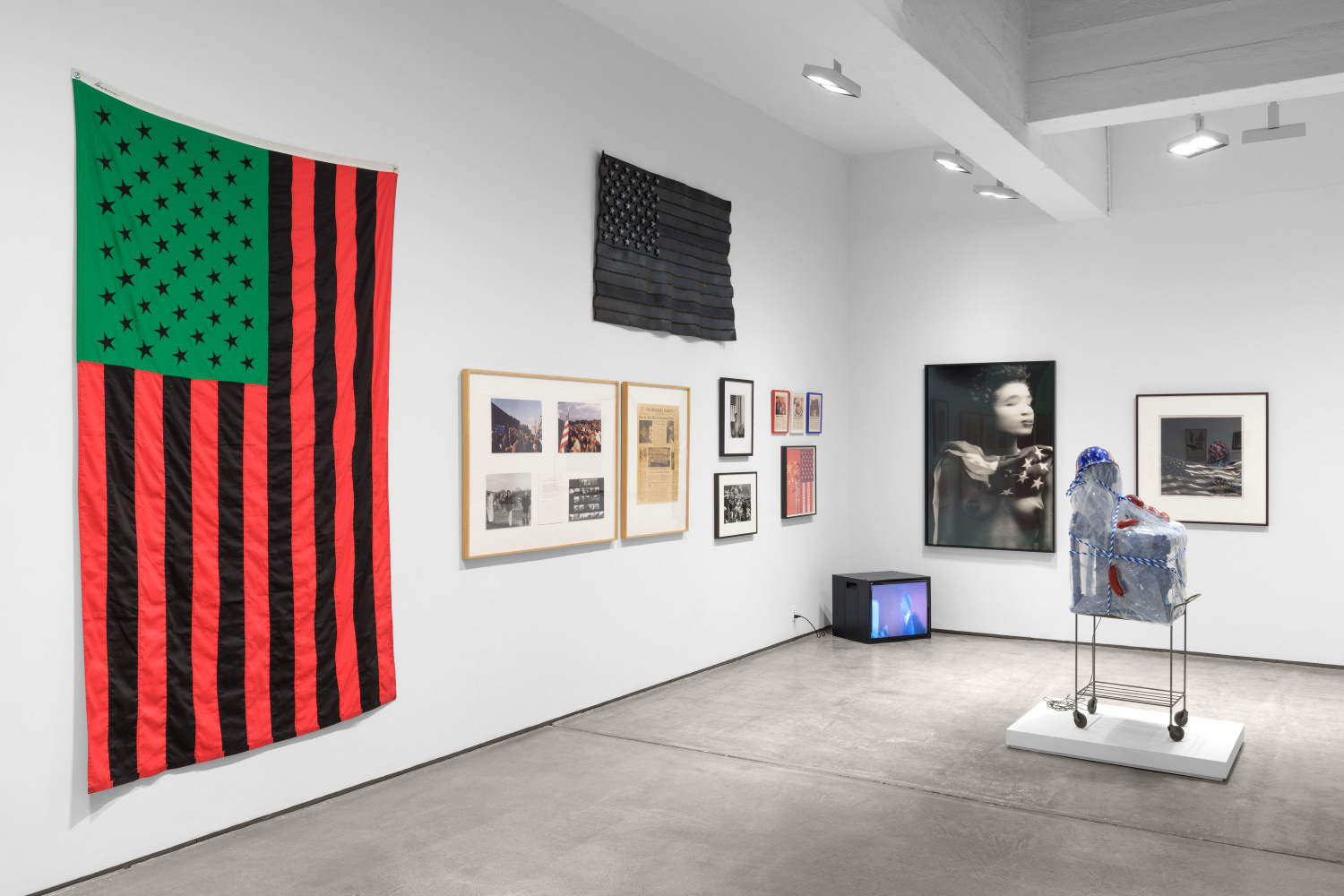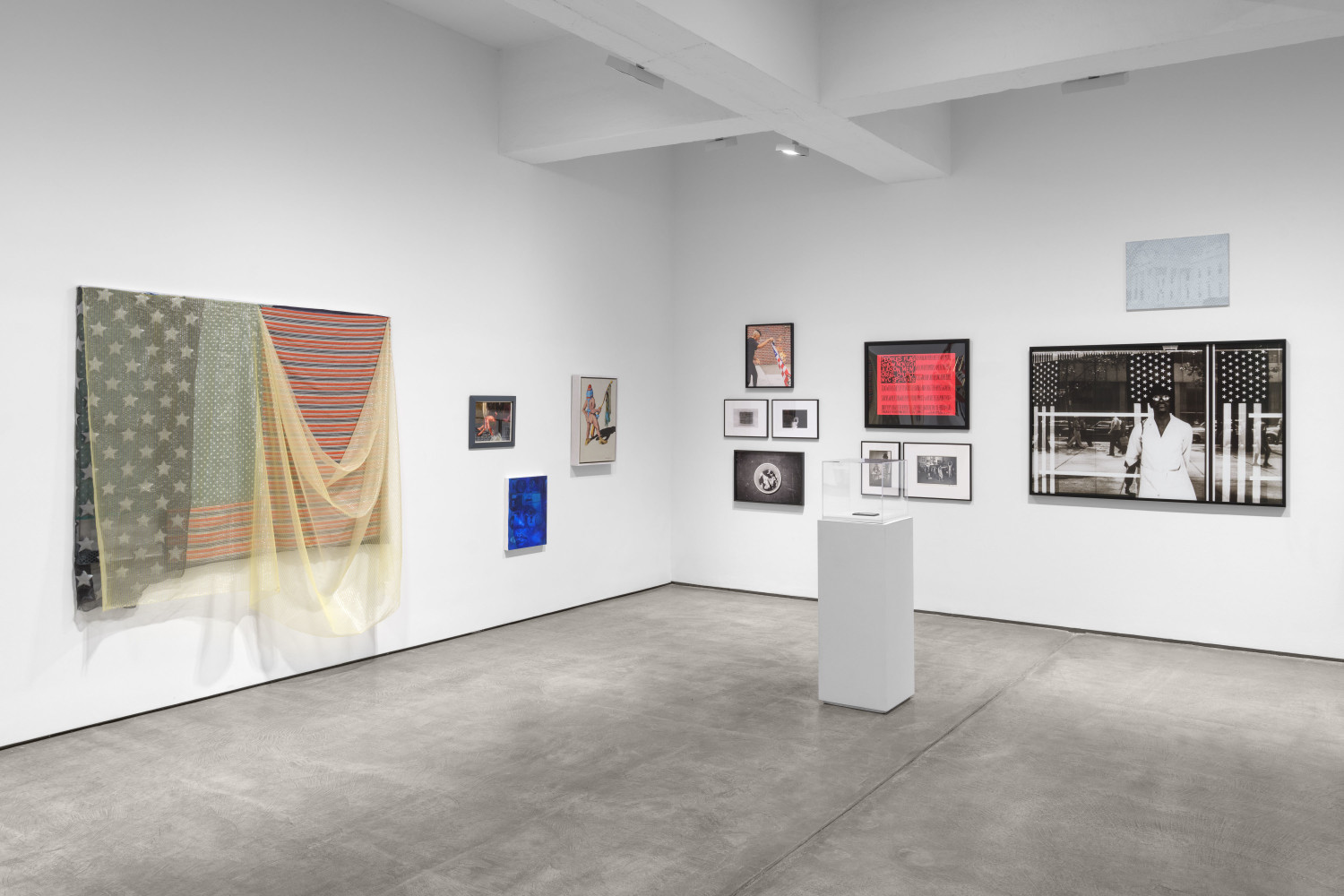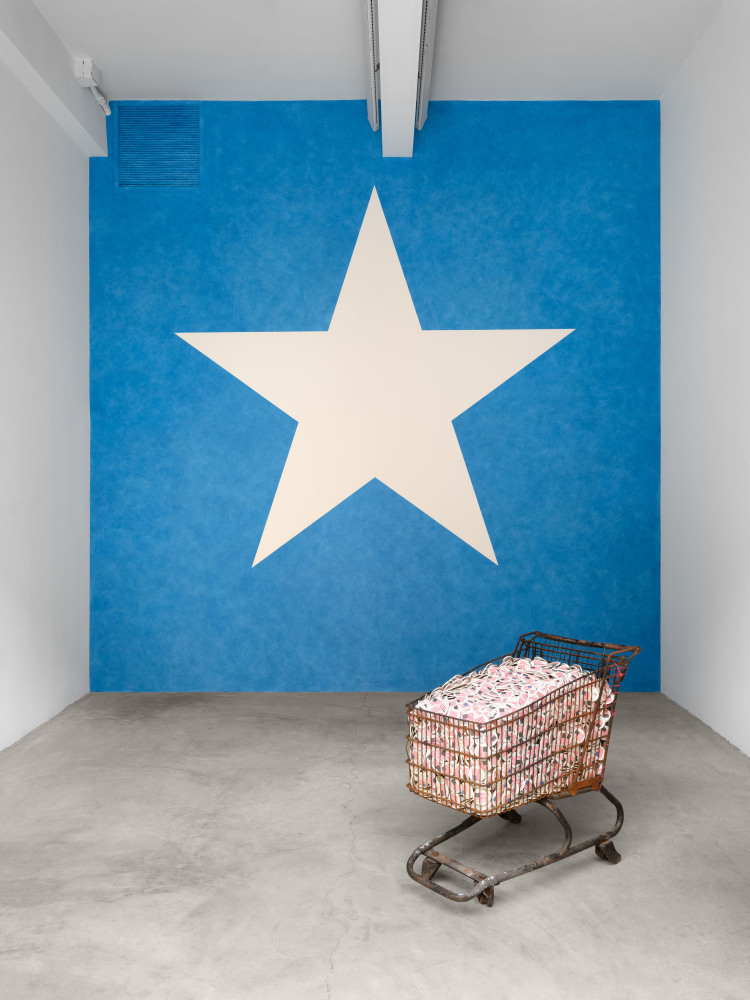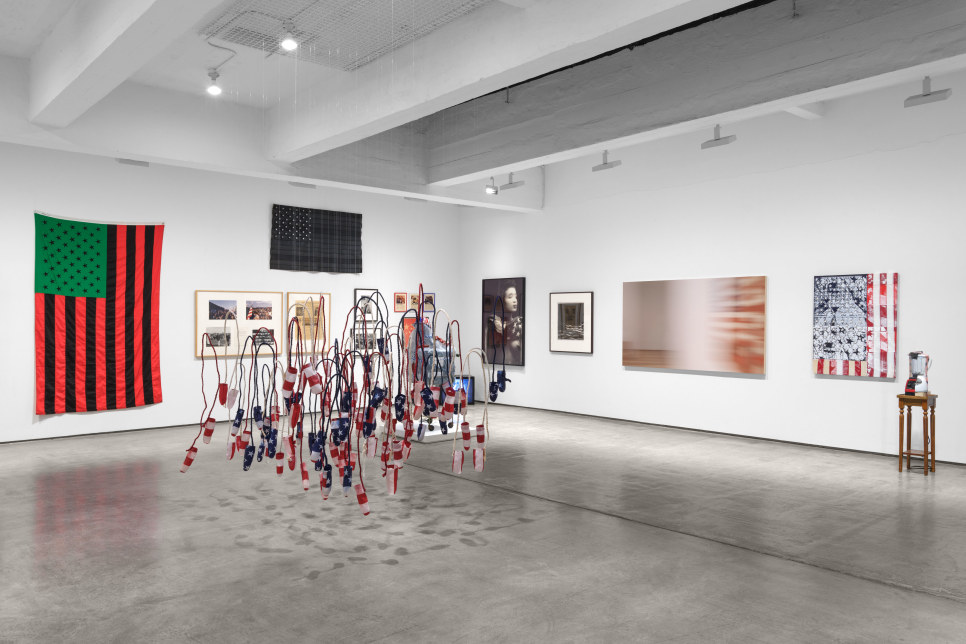
The flag of the United States is a highly potent symbol of patriotism that simultaneously unites and divides the nation it represents and has long been celebrated and disparaged by artists enthralled by its power while remaining wary of its application.
This exhibition will survey artworks made using or depicting the American flag and that exemplify the ambivalent nationalism, patriotic nostalgia, and social anxiety of the highly politicized motif. Works will date from the late 1950s––a period of huge historical significance for the United States and the global spread of capitalism––through to our contemporary moment of heightened political tension.
Among the first generation of flag-wielding artists is Jasper Johns, who described appeal of the flag in relation to its pervasiveness: it was something “seen and not looked at”.[1] Claes Oldenburg, on the other hand, considered the flag’s ubiquity a symptom of the commercialization of patriotism and history, and the family of flags he made from cardboard and driftwood in the summer of 1960 in Provincetown, Cape Cod, are both parody and symptom of the chronic idolatry he encountered there.
Following the Civil Rights Movement and protests against the Vietnam War the flag became an increasingly charged cultural symbol in the late 1960s and 1970s, and Douglas Huebler, Faith Ringgold, Edward Kienholz, and Ming Smith were among the artists reinterpreting its symbolic implications. In 1990 David Hammons debuted his African American Flag in the red, green and black palette of the Black Liberation Flag, and the following year Hans Haacke responded to the national disgrace of the Gulf War with Collateral, a rusted shopping cart full of flag buttons with the caption “May God bless the victory of the allied troop [sic]”.
Among the many examples of contemporary artists extending this critical investigation into the present are Sanford Biggers, Carla Edwards, Glenn Ligon, Eric. N. Mack, Kiyan Williams, and Hank Willis Thomas with new works made especially for the exhibition.
A portion of the proceeds from the exhibition will be donated to America Votes, the nation’s largest grassroots voter mobilization effort.
Artists:
Benny Andrews
Diane Arbus
Sanford Biggers
Chakaia Booker
William Copley
Sam Durant
Carla Edwards
Elliott Erwitt
Robert Frank
Lee Friedlander
Wayne Gonzales
Felix Gonzalez-Torres
Nancy Grossman
Hans Haacke
David Hammons
Lyle Ashton Harris
Rachel Harrison
Jonathan Horowitz
Douglas Huebler
Sonya Kelliher-Combs
Jasper Johns
Cheyenne Julien
Edward Kienholz
Josh Kline
Louise Lawler
Jacob Lawrence
Sol LeWitt
Roy Lichtenstein
Glenn Ligon
Robert Longo
Peter Moore
Eric N. Mack
Richard Marquis
Claes Oldenburg
Gordon Parks
Pope.L
Jaune Quick-to-See Smith
Faith Ringgold
Dread Scott
Gedi Sibony
Ming Smith
Hugh Steers
Tseng Kwong Chi
Kiyan Williams
Hank Willis Thomas
Garry Winogrand
[1] Jasper Johns interviewed by Walter Hopps, Artforum vol. 3, no. 6, March 1965

